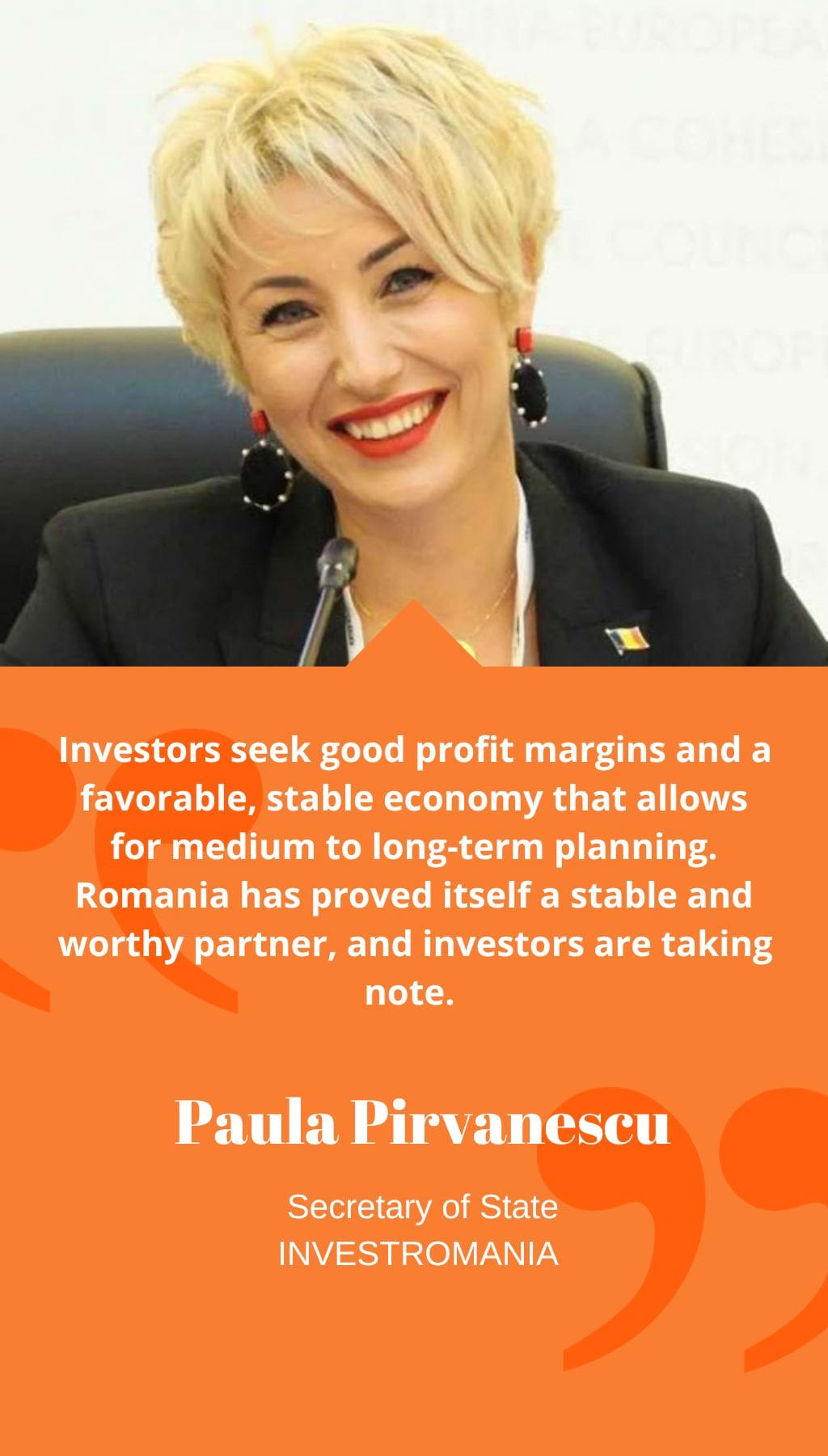
- Romania | 17 May 2019

Could you tell us about InvestRomania and what you do as a promoter of trade and investment in the country?
I find it a challenge and privilege to approach Romania’s business climate through the lens of a policy maker and promoter of trade and investment. Our efforts over the past few years have paid off, culminating with Romania’s increased notoriety as an attractive and profitable business destination in the global ecosystem. InvestRomania is the institutional partner and one-stop-shop government body responsible for bringing together all relevant public and private actors currently present or planning to invest in the country. We offer technical assistance from scratch, as well as post-implementation assistance up to the successful completion and running of each project. Our current priorities include increasing greenfield projects, contributing to the import of capital, know-how, and technology, and better congruence between different regions in the country. We find the current bureaucracy excessive and work towards streamlining it and fostering transparent communication between the public and private sectors.
Can you explain the rationale behind the six industries InvestRomania is focusing on and what the country’s competitive advantages are?
We are currently focusing on six industries: IT, automobiles, outsourcing and finance, biotechnology, aerospace, and energy. Romania offers significant advantages to investors, such as a highly skilled, multilingual, and competitively priced workforce, the third lowest salaries in Europe, and a top three position in attractive tax regimes in Europe. Additionally, the country has a well-developed network of 85 industrial parks, public as well as private, coupled with great fiscal incentives for research and development. Our motto is “Romania is a country of quality,” and we aim to attract high-value investments that contribute to the country’s economic growth.
How supportive is the state through the legislative and fiscal measures instituted to encourage further investment?
Romania has lowered the bar for state aid meant to help support industry investments to 1 million euros. This is meant to allow a broader number of companies, including local ones, access to regional markets, and results are expected to start showing. Eligible costs include new building construction, any rental affiliated costs, technical installations, new machinery and equipment, as well as purchasing intellectual rights.
What are the main challenges foreign companies face when doing business in Romania and what progress is being made to overcome them?
One of the main challenges is the global issue surrounding human resources. The Authority for Dual System Professional Training was set in motion to increase the training and retention of Romania’s workforce, and there have been increased partnerships with universities. Technical schools also offer a significant workforce for the automotive and other industries. Infrastructure is another acknowledged challenge, but the government is treating it seriously with observable improvements. Bureaucracy and the occasional difficulty in dealing with local authorities are being worked on, and this has considerably improved over the past year. We are working towards encouraging regional development and adapting the current legislation to present-day needs.
What is the investors’ perspective on Romania’s business environment from a global viewpoint?
Investors seek good profit margins and a favorable, stable economy that allows for medium to long-term planning. Romania has proved itself a stable and worthy partner, and investors are taking note. Non-EU companies are also attracted by the access they gain to the EU’s 500 million consumers and the associated advantages. Many Korean and Japanese companies, including Doosan, Samsung, Yazaki, and Makita, consider Romania a strong and dependable regional partner. Chinese companies seek ready-to-run businesses, and the government has identified suitable projects in transportation, agriculture, tourism, and several others. Finally, the United States remains a priority, and we are working closely to foster collaboration between our two nations.
Could you share your perspective on InvestRomania’s future direction and what advice would you offer to potential investors considering investing in Romania?
InvestRomania’s primary focus is on cultivating foreign trade and investment while continuing to maintain the positive growth trends we’ve seen over the past few years. Our goal is to maintain our status as one of the leading destinations for FDI in the region. We have witnessed a noticeable increase in investment requests since spring 2018, ranging from €50 million to several hundred million Euros, far more than in previous years. Furthermore, we have observed a desire to collaborate with local entrepreneurs, indicating investors’ confidence in Romania’s integrated production market.
We strive to be at the right place and time to inform businesses of the opportunities that exist. Our ultimate goal is to raise awareness of the benefits of investing in Romania and encourage businesses to establish a presence here.
To potential investors, we would emphasize that there is no better time than the present to invest in Romania. Romania is one of the highest performing economies in the EU and has become a pillar of stability and growth in the region. Therefore, we encourage investors to take advantage of the opportunities at hand and establish a presence in Romania.














